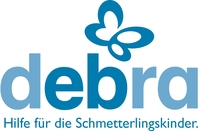The Zauner Working Group
The Wally WG focuses its research on the identification of target molecules for the treatment of various aspects of EB and the development of methods for the early diagnosis of skin cancer in EB patients.
MicroRNAs as a kick-off point in the fight against cancer in EB
The discovery of small RNAs, known as micro(mi)RNAs represented a breakthrough in the understanding of cellular processes involved in the development of cancer. Researchers found that different miRNAs play an essential role in tumour development, especially in the development of metastases.
Since recessive dystrophic EB patients have an extremely high risk of developing a form of skin cancer that is hardly treatable, our goal is to investigate the role miRNAs play in tumour development in EB patients. We aim to identify the miRNAs that can be used as treatment targets as well as those that will enable diagnosis and early detection. Tumours in RDEB usually develop from chronic wounds. They are often difficult to detect since it is difficult to visually distinguish them from the wound tissue. The analysis of a miRNA fingerprint could reduce biopsies for the detection of tumour tissue to a minimum.
Using medications to attack the miRNAs that have been identified as triggers in the development of cancer can be done in different ways. For example, a missing miRNA can be replaced, or many miRNAs of another type can be bonded together and rendered harmless. It is also possible to investigate the effect of already-known drugs on a specific miRNA. Both approaches could be applied both locally and systemically – and they could not only attack a tumour, they could prevent metastasis.
Small Molecules – Transport Possibilities for Drugs
Another goal of our research is to investigate strategies for introducing a drug into the skin. The aim is to examine the potential and efficiency of various small molecules that can be used to transport drugs such as liposomes* and exosomes**. While liposomes have already been used in cosmetics and medicine, exosomes are still being researched as transporters. The natural function of exosomes is the transmission of messages (e.g. in the form of miRNAs) from one cell or cell type to another. This characteristic should be exploited because it has the advantage that exosomes can be obtained from the patients themselves, so the toleration level should be high, allowing a tissue-specific effect.
Therapeutic Molecules
Finally, we also deal with other short DNA and RNA molecules, such as aptamers and antisense-oligonucleotides. These have great therapeutic potential and are particularly useful for healing wounds.
Project "Statins in RDEB-SCC"
Funding
The current “Statins in RDEB-SCC” project is funded by DEBRA UK and DEBRA France (GR000040).
Preliminary data generation was funded by Paracelsus Medical University (PMU, 2022-SEED-019-Zauner) as well as DEBRA Austria.






